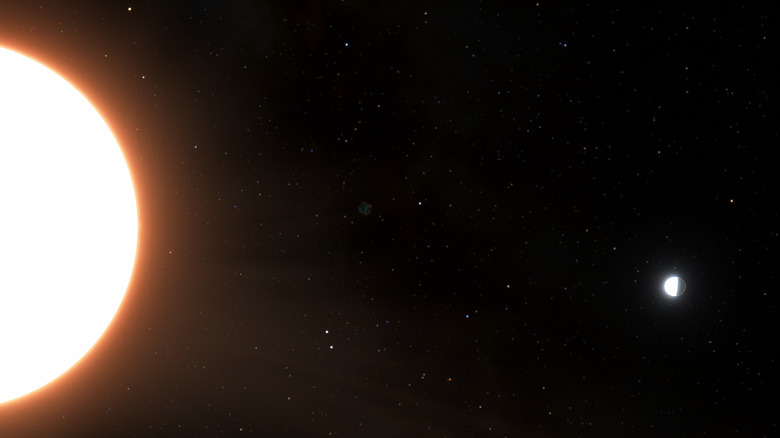The Most Reflective Exoplanet Ever Is A Scorching Hell Where It Rains Molten Titanium
The European Space Agency's "Cheops" telescope, which has been tasked with studying nearby bright stars harboring a planetary system, has made a remarkable discovery. A team of researchers led by Vivien Parmentier at France's Cote d'Azur Observatory observed the exoplanet named LTT9779b and found that it's the most reflective celestial body discovered to date.
The team is equating it to the largest mirror in the universe spotted so far by humankind. This scorching hot exoplanet, first discovered in 2020 by NASA's TESS mission, reflects nearly 80% of the light cast on it by the host star. For comparison, Earth only reflects 30% of sunlight, while Venus reflects roughly 75% of the light falling on it from the Sun.
The exoplanet in question has a diameter approximately 4.7 times bigger than Earth, and it takes just 19 hours to complete one full revolution around its star. However, this planet is an oddity for multiple reasons. All planets discovered so far that orbit their star in less than one Earth day have a radius at least ten times bigger than our home planet and fall under the "hot Jupiter" category.
However, due to its size, the exoplanet LTT9779b slots in the "ultra-hot Neptune" category. Moreover, being so close to a star should strip away the planet's entire atmosphere and leave behind a rocky shell. In this peculiar case, there is an atmosphere, but a rather extreme type.
A burning world that shines like a mirror
"Imagine a burning world, close to its star, with heavy clouds of metals floating aloft, raining down titanium droplets." This is how LTT9779b is described by James Jenkins, co-author of the research and an astronomer at Diego Portales University. The exoplanet's side facing its star has a temperature of around 2,000 degrees Celcius.
But despite such scorching hot conditions, the planet still has cloud formations. "We should think about this cloud formation in the same way as condensation forming in a bathroom after a hot shower," explains Vivien Parmentier, a co-author of the research paper published in the Astronomy & Astrophysics journal.
But these are no ordinary clouds. Instead, they are made of evaporated silicates and titanium metal. This metallic cloud reflects a huge portion of the light falling on the planet and gives it a mirror-like appearance. It's also thanks to these heavy clouds of metals and silicates — the material that forms glass and sands — that the host star doesn't blow away LTT9779b's atmosphere.
Notably, no other "ultra-hot Neptunes" of this size and weight class have been spotted. Located over 260 lights years away from Earth, LTT9779b is said to be the first exoplanet that is as shiny as Venus and sheds new light on the existence of unique planets thriving in the "Neptune desert" region of their host star.
